Heritance Ahungalla Hotel and Resort used to be the Triton hotel until it was destroyed by the tsunami in 2004. It was the first five-star property outside Colombo and is still one of Sri Lanka’s most visited hotels in the area.
This is one of the legendary Geoffrey Bawa architectural fantasies that come to life, where the uninterrupted line of sky merges with the sea, giving the illusion of continuous flow right into the azure waters of the main swimming pool.
This gives way to slender white columns rising majestically from the courtyard into the elegant marbled lobby where a warm welcome awaits, with a larger than life ‘pun kalas’ frieze on the wall providing the auspicious touch, reminiscent of our proud Sri Lankan heritage.
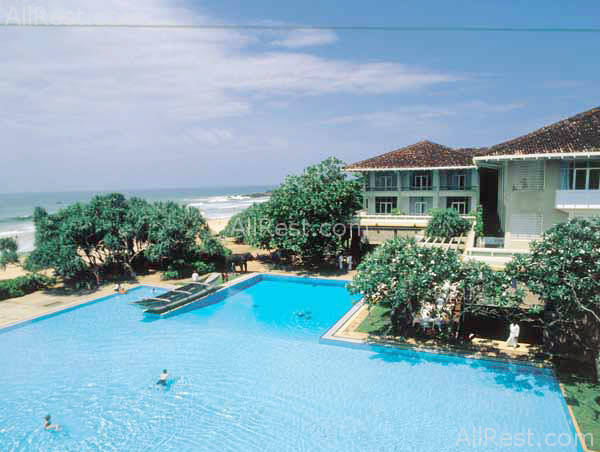

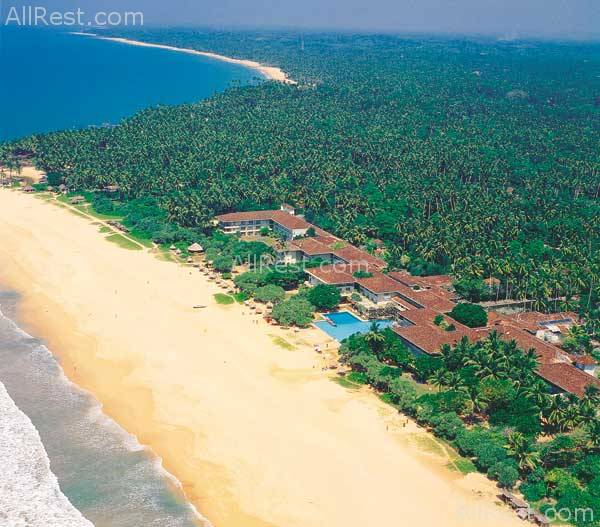
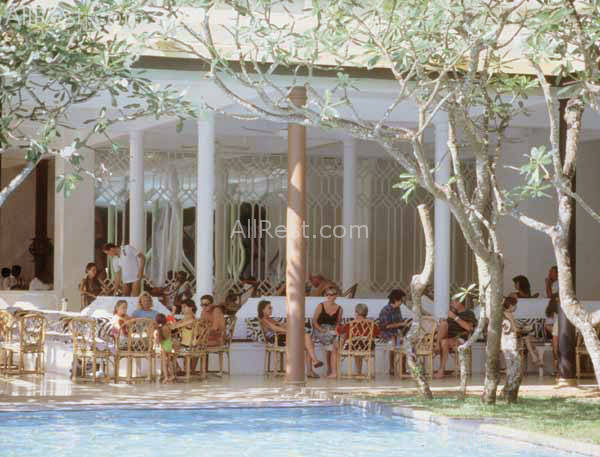

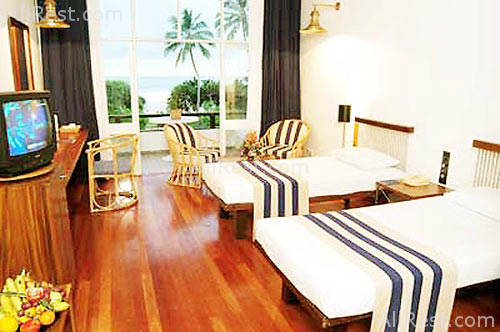
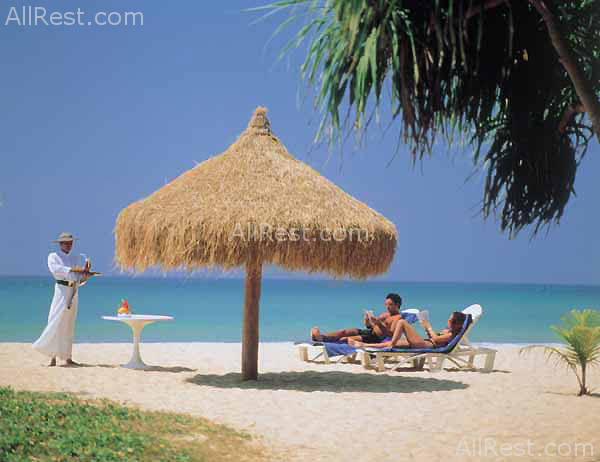
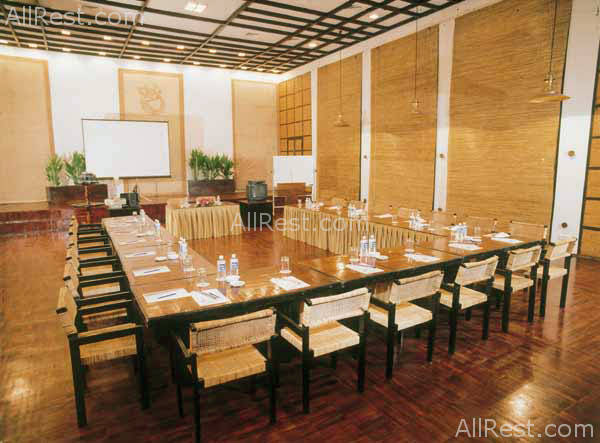
The Triton Hotel was commissioned by hotel development firm Aitken Spence in 1979. Michael Mack, one of the directors of Aitken Spence, hired long-time friend and architect Geoffrey Bawa to design a 125-room beachfront hotel on the southwest coast of Sri Lanka. Construction was completed on the project in 1981.
The hotel is situated in Ahungalla in the Southern province of Sri Lanka. Ahungalla is further south of Bentota and is in close proximity to one of Sri Lanka’s best Mangrove Swamps. The main area of the side is a rectangular beachfront parcel stretching 300 meters wide parallel to the beach and 100 meters inland from the sand’s edge. A smaller sliver of land connects the beachfront land to the Colombo-Galle road; this strip is 300 meters long and ranges between 15 and 50 meters wide. The longitudinal axis of the property and the main hotel building is aligned with the orientation of the coastline bordering the site. This axis is rotated thirty degrees counter-clockwise from the north-south meridian.
The long and narrow hotel snakes along the coastline parallel to the water’s edge. The building is uniformly three stories tall throughout. The basic unit of the hotel is a sixteen-meter-wide single-loaded corridor, lined by guest rooms; while generally the building follows a linear path where a series of guest rooms runs parallel to the ocean, the hallways loop at points to form a handful of small square garden courtyards bordered by open air circulation spaces. The loops also create a larger order in which three major courtyard spaces are formed adjacent to the beach. The northern and southern courtyards are gardens adjacent to guest rooms, while the central courtyard is primarily occupied by the large hotel swimming pool. The pool is an irregularly shaped composition of rectangular parts that measures thirty-five meters wide at each of its extremes.
The swimming pool is part of an elegantly arranged axial sequence of spaces that leads the visitor from the eastern entry of the resort to the ocean at its western limit. The swimming pool is immediately to the west of the wall-less reception lobby, which in turn sits to the west of a large reflecting pool that borders the main entrance driveway. Bawa intentionally placed water, the reflective polished floors of the lobby, and then more water on the axis of the entry in order to create a continuity between the indoor and outdoor spaces of the hotel and the ocean visible beyond. The surfaces of the water and the lobby floors are at precisely the same level in order to emphasize this designed horizon. The effect is a dematerialization of the ground plane that draws the visitor visually through the building and to the ocean beyond from the earliest approach to the hotel.

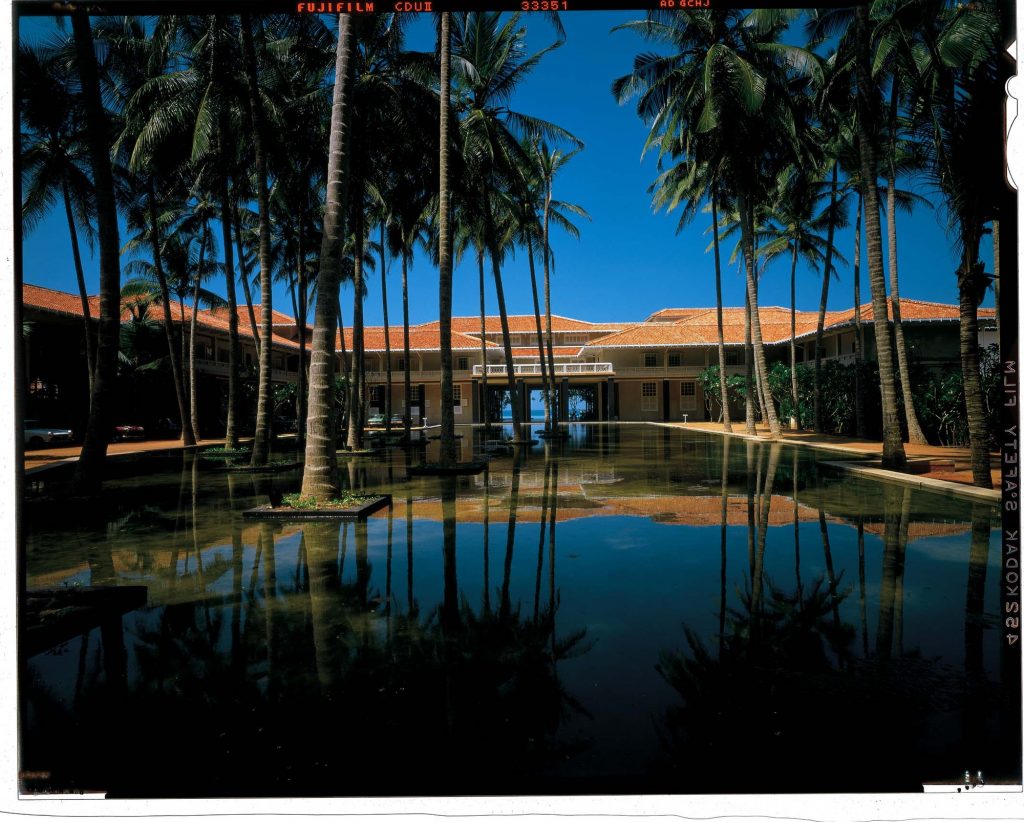

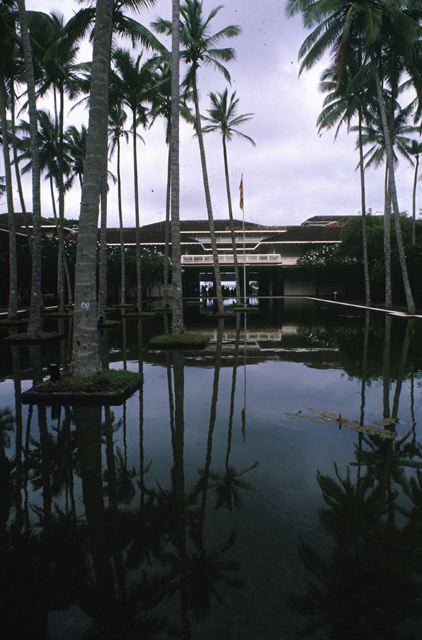
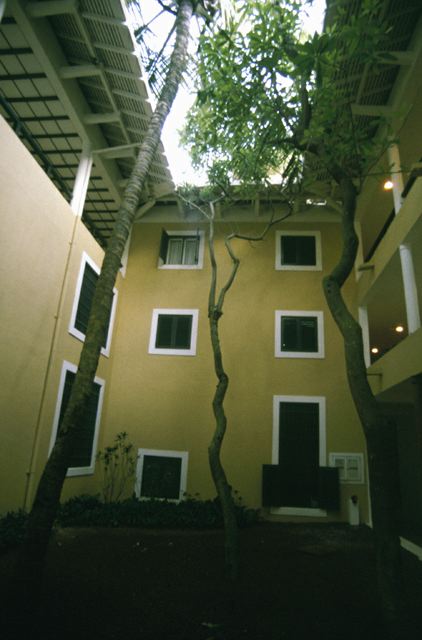
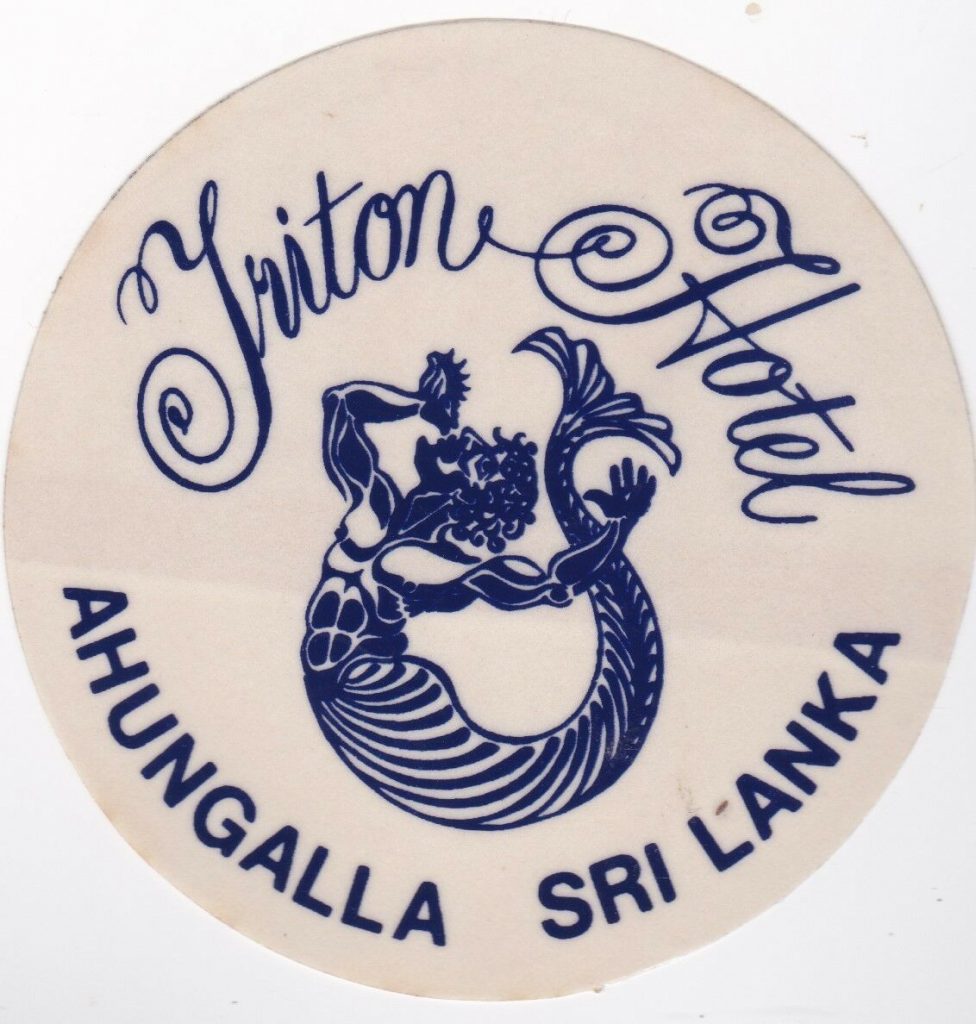
The Triton Hotel featured very clean and simple architectural detailing with little ornamentation. The concrete walls were painted a pale gold tone with white trim, columns, and ceilings. Interior spaces were light and airy, with either pale tiled floors or carpets in neutral tones. Planters in the open-air lobbies and hallways blurred the lines between interior and exterior space. Throughout, the architectural palette was restrained in order to foreground the stunning views and landscape outside of the building.
While the Triton Hotel was quite simple in its design and detailing, it continued to have a powerful effect on visitors due to its clever spatial planning and understated sophistication. In this design, Bawa clearly used the minimalism that characterizes his later works, in a departure from the vernacular style that is often associated with his early projects. However, in other ways Bawa continued to develop ideas long-explored in his practice, such as the memorable sequencing of spaces in order to highlight the natural beauty of the landscape.
This hotel is ideal for those preferring a relaxing holiday, however day trips to various tourist spots are possible. Our wedding took place at this hotel and I would highly recommend it to others. The staff/wedding planners are organised and efficient and ensure your stay/wedding is a special one. With our package we were upgraded to one of the few deluxe rooms (penthouse) which was the ultimate in luxury. The standard rooms are clean and comfortable but if you are prepared to pay the extra the deluxe room will ensure your stay is extra special. Facilities at the hotel are excellent, meaning you never need to leave the hotel grounds. You can even catch a glimpse of wildlife from within the hotel grounds with monkeys swinging from the hotel trees, monitor lizards on the tennis courts, squirrels running by your sun lounger and fruit bats hiding in the dark, the hotel even has it’s own elephant. Finally, security is also good with locked gates on entry to the hotel grounds and 24 hour reception service.
Julie Thompson (UK) – Aug 2004
All 160 rooms of the Triton Hotel were fully air conditioned with either a terrace or a balcony with spectacular views of the Sri Lankan ocean. Equipped with en-suite bathroom with hot and cold water, telephones with IDD facility, radio, television with satellite channels, mini bar and a personal safe.
In addition to the standard facilities of a hotel, Triton had two swimming pools, a conference hall, a gymnasium and fitness centre, a sauna and health club, a jacuzzi, a tennis and badminton courts, a night club, a shopping arcade and a salon.

time. This picture was taken 7 minutes after water was at its lowest level. The view is from the
top floor of the beachside Triton Hotel, looking seaward over the reception area and across
the swimming pool.
The 2004 Indian Ocean earthquake and tsunami occurred on 26 December, struck the Triton Hotel and damaged most of it. And the most recent major renovation took place between 2004 to 2006, helping repair damage caused by the natural disaster.




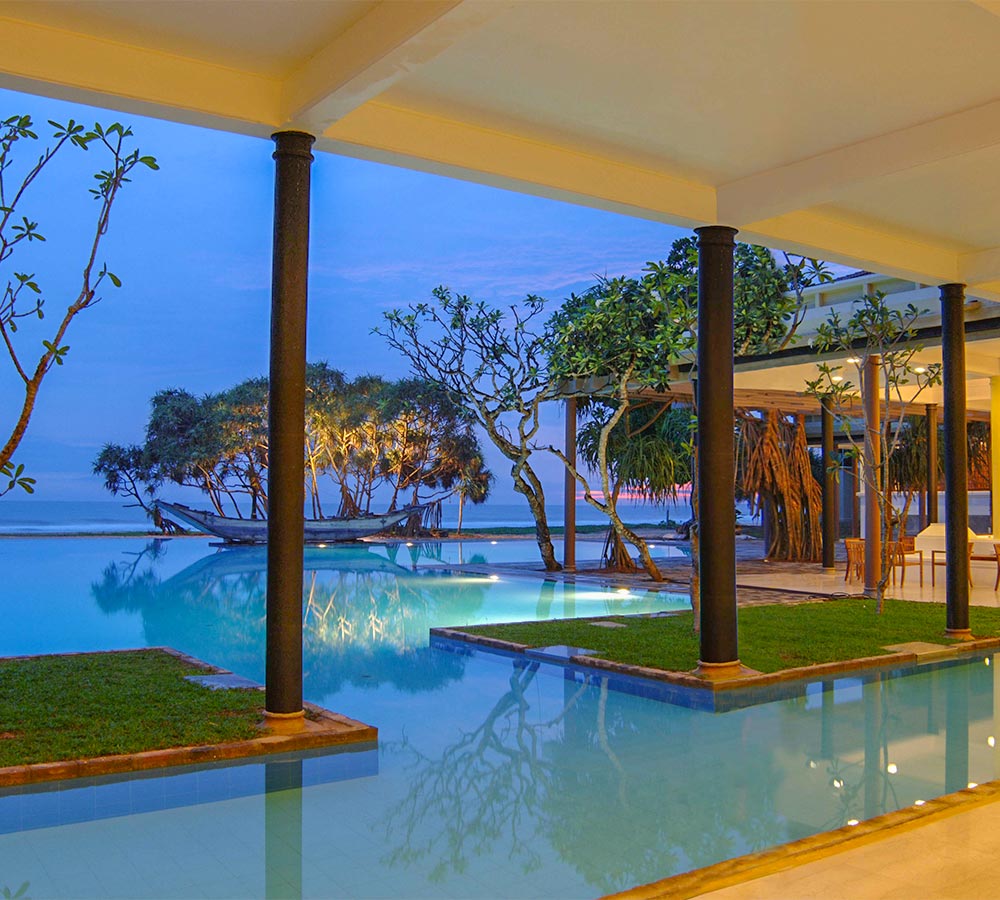
After two years of investing over USD 12 million in the extensive refurbishment of the repairs, Aitken Spence launched their new hotel brand Heritance Hotels in 2006 in May. Triton Hotel was opened under the new name of “Heritance Ahungalla” along with relaunched Kandalama and The Tea Factory hotels as Heritance Kandalama and Heritance Tea Factory.
Credit – ArchNet, Out Bound Holidays, All Rest, Island Tours, The Island, TripAdvisor, Heritance Hotels






Loading…
Loading…